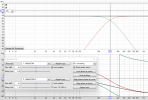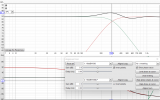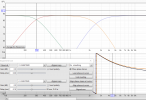Good points to consider.These things also have issues. You'll need just about perfect directivity matching to make this work. In a normal less steep slope, directivity will slowly be matched. With brick wall filters you can get a sudden step. Extra care has to be taken as well to create filters with little rining. This might be audible in some cases.
Ime, steep linear phase xovers have helped solve both those issues.
Since directivity matching is a function of the acoustical design....center to center spacing, cone and waveguide pattern vs frequency, etc,....
we know there is an optimum crossover frequency for directivity matching.
I've found the odds of being able to actually use that optimum frequency point go up! with steep xovers.
Because the critical frequency range of required well behavior is greatly reduced, and it's simply easier to get good behavior in a smaller range.
Shallow slope filters are simply more work to make behave over a wider critical region, and often are problematic further outside the the critical region.
I've found a little bit of forethought in driver selection that fits the acoustic design, makes steep filters that match directivity a snap.
Agreed on extra care to avoid ringing.
Care must be taken to achieve a fully acoustically complementary design, which eliminates ringing.
Which is easy enough to achieve on-axis, but not so easy off-axis due to lobing.
Where there is lobing, we know there is an accompanying loss of acoustic complementary.
So, there is the potential for ringing, with off-axis lobing; but this potential is only in the critical crossover region.
The key to solving this is again steep filters, I think.
Hey, just shrink the range of the critical crossover region, the range of the lobing region, the range of potential ringing, by going steep!!



